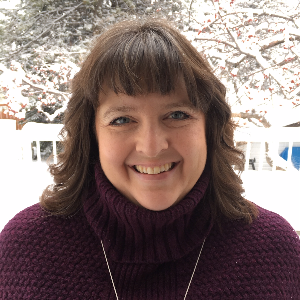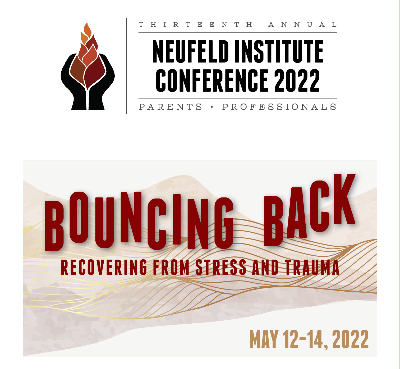
The theme of Neufeld Institute Conference 2022 is the recovery of well-being, especially during and after times of stress. Given the central role of play in this process, we asked some of our conference presenters to share stories that provide a glimpse of play at work. The following are three of the stories that were submitted.
From Robin Brooks-Sheriff (Canada)
It was March 2020 and there was a growing sense of unease. Could this actually be happening? How serious is it? Surely, we have the technology, the political will, the military – something?! – to stop this tiny little virus? But, we didn’t, and the world came to a screeching halt. While we have all experienced trials, hardships and frustrations in the last two years, those first few weeks were unparalleled in terms of the fear and alarm.
I had no idea how to explain this to my sixteen-year-old daughter, or how to reassure her. Overnight, her world shrank to our house and she felt she might accidentally kill someone if she ventured out and contracted the virus. I could barely contain my own alarm let alone mitigate hers. Fortunately, while her dad and I sat stunned on the couch watching endless news cycles, my daughter headed for her paints. A few hours later, she completed a piece,“Pandemic Panic,” which involved puffball creatures with panicked eyes. We all agreed that it fit the mood perfectly. Over the next days and weeks, she painted, drew, created and crafted everything she could get her hands on. Some creations were dark and foreboding, some light and playful.
When talking to my brother, I discovered his teenage girls were doing the same thing. Shoes were being dyed rainbow colours, t-shirts painted, jeans covered in rhinestones. The running joke was that we would all emerge from lockdown bedazzled and tye-dyed.
The answer for our teenagers that spring was play; it happened spontaneously. Play was the only answer to this insane and scary moment. It created a bubble in time and space in which the alarming realities were suspended. I could sense that I better stay out of the way. This wasn’t just entertainment–this was important, engaging and, yes, therapeutic. I showed up with snacks, scrounged for art supplies, and let my daughter get on with it. There was nothing else I needed to do: Nature was taking care of her in the best way possible.
From Jodi Bergman (Canada)
My youngest is turning 17 this month and quickly moving into adulthood, so I appreciate this opportunity to sit back and reflect on how play became an essential parenting resource for me as I searched for ways to engage my gaggle of young children.
Dr. Neufeld shared that singing and music are a playground for emotion. This makes me think of my middle daughter, who was very precocious and playful as a young one. Singing with her was one of the few ways we could move through our day with ease. Through her initiative we had a song for clean-up, bedtime, waking up and goodbyes. We had a song for getting dressed, feeding the dog and bathtime … and the list went on and on.
As she moved into her teen years, the conversation got a little more strained. Her iPod became a constant, with earphones canceling the outside world. I struggled to engage her in conversation and was at a loss to figure out how to reach her until I remembered her passion for musical expression. The next day during our usually silent walk together, I asked her to share her playlist. Over the next while, she evolved from simply sharing her music to singing her favourite songs to sharing her original lyrics. Walking together and listening to her sing a song that reflected her mood became a ritual for us. It got us through a few tough years and offered both of us joy and a place for emotional release.
My daughter is grown up now and off in her adulting world. We still have precious moments together, though, when we walk or spend time in a car together, singing through her new and old playlists.
From Elana Strobinsky (Israel)
Some children are born with a heightened awareness of the world around them and quite often find themselves in a general state of alarm. This was the case with one of my sons, who developed compulsive symptoms at a very young age. The world of play was an essential part of supporting my son’s anxiety in moving freely and, eventually, in coming to rest. I danced him in and out of rooms, to and from the car, in the tempo of his compulsive steps. We moved through parts of the day together this way. As we connected and gave physical expression to the alarm, eventually, it drained.
In my work as a school psychologist, I often ask the children I work with: “If we invite that feeling that fills you up into the room and to sit it down in that chair, what would it look like? What would it say? What shape/colour does it have?” For many of them this is the first opportunity to play with their anxiety in a safe place. Dalia, a sweet 2nd grader told me, “[My feeling] wouldn’t sit still in that chair at all! It would bounce all over the place and make a huge mess!” That allowed us to joke about all the things in the room that would be messed up.
The beauty of play is also the effect that it has on us, as children’s caregivers. Children in alarm trigger our alarm as well, which creates even more alarm in the child, continuing the vicious cycle. When we play with their alarm with them, we also create a safe place for our own strong emotions. That way they don’t get in the way of our attachment, which is an essential element in the long term answer for anxiety in children. So when in doubt, you might want to “play it out”!
EDITOR’S NOTE: Our presenters have been busy cooking up a feast of panels, breakout sessions and keynotes for our 2022 online conference – and we hope that you will join us for the banquet from May 12-14, 2022!
Robin’s presentation:
B5 – My Teenager is Stuck in the Basement! Behaviours that Worry Us and Finding the Way Through
Jodi’s presentations:
B3 – Bouncing Back: Creating the Needed Rituals and Routines
C2 – Helping Children Bounce Back from Divorce
Elana’s presentation:
E1 – Bouncing Back as Students
To learn more about these presentations (and many more!), visit the Schedule & Sessions page on the Neufeld Institute Conference 2022 website for full descriptions and to register.

I was recently fortunate enough to take a solo trip to the west coast of Vancouver Island – the land of ancient cedars and shore pine bogs, long stretching beaches and the mighty Pacific Ocean with its endless horizon and powerful waves. One afternoon on this trip, in a particularly reflective place, I found myself at the ocean’s edge contemplating loss; how it surrounds us, how ubiquitous it is. And how, despite its inevitability, there seems to be so little room, space and permission in our society to feel and grieve our losses, large and small. There is so much pressure to ‘get over it’ or ‘on with it’, to simply adjust, ignore, or focus on the positives, completely eclipsing the crucial role that feeling our losses and missing plays in human adaptation.
There, on the beach that day, the tears came for me in a deluge; at first over a little specific loss, but expanding outwards until I felt as though I was weeping for all that had ever been lost and all that ever would be lost, all at once. There is something about where ocean meets the shore that has always provided the best accompaniment for the melancholy in me. As a teenager I clearly remember gravitating to the beach, unsure exactly why, only to find that, once sitting with those ocean waves, the waves of sadness would also come. For me, the power and vastness of the sea and its saltwater spray seems to beckon my saltwater tears.
That particular day, lost in my own sea of tears, I happened to look up and notice a young child, weary-seeming mother in tow, gleefully running towards the ocean’s edge, radiating delight. In full explorer adventure mode, stones were upended, magical creatures uncovered, seaweed ‘pets’ pulled up and down the beach, sandpipers chased. I am perpetually astounded by the abandon with which young children can throw themselves into play.
After observing this young child for some time, running, and jumping, shrieking and exploring, absorbed completely in the magic of our surroundings, I noticed that a brand-new project was coming to life: an elaborate sandcastle was now in the making. Isn’t that appropriate, I thought to myself.
Sandcastles hold a particularly important place in my heart. To me, sandcastles have always been such a perfect prototype for loss. No matter how magnificent the castle or creation, no matter how much time and effort and passion you put into its construction, there is one reliable inevitability – it will not last! It will eventually be washed away or swallowed up back into the sea. Does that mean we don’t build them? Certainly not. We continue our efforts, creating our masterpieces and then giving them back to the sea, playing, in our own way, with inevitable loss.
I was delighted, watching this particular child so deeply engrossed in the engineering feat that was this magnificent castle, with its moat and towers and seashell decorations. And then, I saw it coming. From seemingly a mile away. A rogue wave – much bigger than the rest, arriving much sooner than expected from the incoming tide. And, sure enough, in an instant, the wave careened up to that sandcastle, mercilessly knocked it down and washed it away in one fell swoop, almost as if it never was. The startled child let out the most enormous wail, as their carefully constructed palace was utterly destroyed in front of their eyes. Almost immediately, the child’s mother picked them up, and in an exasperated tone, scolded “if you are going to be like this, we are going home. The beach is no place for tears!”
Now, just because the beach is my place for tears certainly does not mean that it has to be the place for everyone! But in that moment, I found myself left with a deep yearning; for that particular child on that day, for their mother, and for all of us. That we may find places and moments to feel our losses, and to cry about our sandcastles that once were….
To hear more from Genevieve on the theme of sadness, you can view her breakout session recording, Ode to Melancholy, from the 2021 Neufeld Institute Conference found on our Free Resources page, and/or attend her upcoming session at the 2022 Neufeld Institute Conference on May 12-14, 2022.

The passing of time – we all experience it. It is not something that can be escaped, only acknowledged or denied. But what if the relationship we take up with time could change our experience of it?
For some of us, we have recently celebrated the beginning of a new “calendar” year: January 1st. I say some, for not all mark the passing of time in the same way. For those cultures more closely connected to the natural world, the passing of time is in sync with the seasons and with cultural and spiritual practices that honour this.
This year I was drawn to reflect on the season of winter with words surfacing like: Retreat. Reset. Darkness. Suffering. Depth. Space. Questions stirred for me: How do we create space, preserve space, honour space?
How do we honour time? One way, I believe, is by not putting unnecessary limits on it – allowing it to unfold as it will, without our agendas. At least sometimes. We need to experience pockets of time like this, where we are not squishing it into little places devoid of air, with no way to breathe. Too often, we unwittingly snuff out the potential of what could be. What could be, that is, if there was room for expansiveness, for unhurried conversations, for thoughts and ideas and emotions to move, for playfulness to emerge.
We also honour time by stepping out of the distractions that pull us out of the present or divide the present into little bits too fragmented to be whole. This fragmentation can leave us scattered and time-starved, for there is never enough room in this space.
What would it look like to slow things down enough to feel whole?
…enough to feel the emptiness of what isn’t or won’t be;
…enough to feel the beauty, the magic, in the smallest of things that might otherwise go unnoticed;
…enough to feel our connection to the world around us, to feel the pulse of the natural rhythms – and in the pulse, to find our own.
What would it feel like to tap in, for a spell, to a rhythm, modelled by the natural world? One where time unfolds with its own patterns, outside of and protected from our current time-obsessed, time-centred, time-scattering world. To do this, we would need to give up the illusion of being in control; that we can somehow contort time and bend it to our benefit, making it (and us) more efficient.
What if we found a different way to be with time?
When we step out of the over-scheduled rut, if even for a short while, we can find ourselves in the magical space of timelessness. Magic in the sense that time feels suspended – we lose our consciousness of time and instead can be fully present and engaged in the space between. Much like crawling through the wardrobe in the Chronicles of Narnia, one enters a portal into a world where time flows at a different pace, where imagination abounds and where magic is around every corner.
We are fighting a losing battle if we try to pursue time directly; it can feel fleeting as we desperately cling on and try to make it last. But science has revealed an alternate way –
one that honours time and expands our experience of it. Surprisingly, this can be found through the timelessness, freedom and rest that play provides.
This is where science and magic join hands and jump through the portal together. This is where our emotions can come out to play, where we can process the hard things and sit in the depths of the darkness without being consumed by it. There is safety here and room to move.
We all – children and parents and grandparents alike – need a portal like this in our life. And this is the space I wish for you all: that you and your loved ones may savour a pocket or two of timelessness sometime in your day or your week, where you step into an experience, leaving any expectations, agendas or destinations behind and feel the magic of what can happen in that place.

As we begin another not-quite-usual holiday season, we wanted to share with you, once again, some seasonal offerings from our homes to yours. In looking at the writings that Neufeld Institute faculty submitted this year, it became clear that what I had in front of me was a collection of togetherness rituals— annual activities that weave together attachment (being known, being significant, love and closeness) and play (expressive, safe, engaging and not outcome-based) making for treasured winter family touchstones. I hope you enjoy reading about the faculty’s togetherness rituals as much as I did . . . perhaps you will see some of your family rituals in a new light and perhaps you will be inspired to create new rituals this season– ones that have connection and joy at their heart.
Heather Ferguson (Canada), whose “kids” are twenty-two and sixteen, writes about how her family’s annual holiday traditions of crafting and making art gave rise to a new ritual a few years ago:
One of the things I have most enjoyed about the winter holidays over the years is crafting with my children. They have always delighted in making homemade gifts — from decorating candles and cookies in their younger years to, more recently, knitting scarves and forging tools. For many years, on the days after Christmas, we would paint. I always yearned to imitate the spirit that my children painted with, hoping I, too, could simply enjoy the mixing of colors and shapes on my page. While at first I struggled to focus on the experience rather than the outcome, over the years I relaxed and came to love this annual activity. Out of that tradition, a new one was born a few years ago when I brought out a large blank canvas. Intimidated, at first, to start, we slowly began sketching overlapping curves and spirals and stars and flowers, moving around the canvas when inspired to add to someone else’s creation. Then, out came the paints. We painted tentatively at first, following the pencil shapes and then, increasingly, following our mood and desire. We embellished and overlapped our own and each other’s creations as we delved into the experience. We ended up with a large eclectic, vibrant painting that hung in our home all year, a reminder of the warmth and pleasure of creating together. And we have created a new family painting every year since.
Laina Clugston (USA) describes how the slow pace of her family’s Christmas traditions allowed them to savour the connection and rituals:
When my daughter was little, I learned about celebrating the twelve days of Christmas. Celebrating twelve days relieved the pressure on all of us. The season began with advent – a time of expectancy and waiting – filled with kind secret deeds inspired by St. Nicolas and preparing gifts. On Christmas morning we gathered in a circle by candle light near the tree. We picked carols to sing and talked about why we give gifts on Christmas. We opened the Santa gifts and stockings–presents were opened slowly and played with – sometimes for hours – before another was opened. The second day we opened the gifts from mommy and daddy. The next day grandparents from Boston and so on, giving time so the gifts could be absorbed and the experience wasn’t too overwhelming. The feeling of celebration continued through the party on January 6th, Three Kings’ Day, which marked the end of the season – a time of giving and family and long-lasting magic.
Robin Brooks-Sheriff (Canada), whose daughter is eighteen, writes about how, after years of seeking to find holiday traditions that felt both joyous and meaningful, her family now has two treasured rituals:
Most of our gifts now take the form of charitable giving in each other’s names. We discover the amazing work people are doing around the world as we hunt down interesting donations to make. Goats? Coats? Training for women in Zimbabwe to fight poachers? Beds for the animal shelter? Sports equipment for kids? Endangered species protection?
The second tradition came out of needing to have an activity to replace the Christmas gift opening frenzy. My creative step-daughter orchestrates a tree ornament making project in which we draw names and make an ornament for someone. The materials must be largely recycled and the project must embrace the fact that most of us have two left thumbs but we laugh and play together and the stakes are low. And every year we add ornaments to the tree that remind us of the time together.
Shoshana Hayman (Israel), mother of six and grandmother of twenty-six, is remembering beloved family traditions and musing on how to update them as her grandchildren grow older.
I was chatting with my fifteen year old granddaughter about our annual Chanukah celebration where all of our children and grandchildren gather to light the candles and to enjoy a festive meal, complete with potato latkes. The younger children love to play games such as “pin the candle on the menorah” and “eat the jelly-filled donut without using your hands.” We have an arts and crafts table where they can paint and decorate dreidels and small clay flasks and a lively Chanukah trivia quiz.
Last year the coronavirus prevented us from celebrating together, and we want this year to be extra special. I asked my granddaughter if she had any new ideas. She flashed a big smile as she suddenly remembered, “You know what I loved most when I was little? The big box stuffed with wrapped surprises!” I smiled too, as we both took delight in the memory. I enjoyed searching for all the little surprises, trying to match each one – glitter pens, flowery pads of paper, miniature dolls, bags of marbles, brain-teasers, tubs of play dough – with the grandchild I thought would especially enjoy it. I remember the eagerness of all the little ones, as one by one, they all received a treasure. It was challenging to find exactly what would delight each child. It was a sort of attachment test, making each one feel special and loved. Now they are older and it’s time to find new ideas for our huge family gathering. But one thing always remains — however we celebrate, I hope they continue to feel how special and loved they are.
Happy Holidays from all of us at the Neufeld Institute!
For more stories about family rituals, you may wish to re-read our 2020 holiday editorials, Traditions: Now More Than Ever and Three Generations in the Kitchen.

I feel fortunate that I discovered the Neufeld approach to parenting when my children were quite young, so I knew that they needed me to help bridge the night.
But knowledge wasn’t everything. I had to find my sense of play as a parent, too, lest I frustrate myself and begrudgingly wonder why my children wouldn’t just “Go the F**k to Sleep,” as the satirical book of the same title says.
Music seemed to offer a certain kind of magic for our family. Listening to, and playing music, has always been soothing to me, and I trusted Dr. Neufeld knew what he was speaking about when he mentioned the power of music to soothe small children, too.
Just before bedtime, I’d set the mood with dimmed lights and gentle serenading from a “Bridging” playlist that I’d created. Not only was it creatively rewarding for me to search for dream-inducing songs, but each song that I found reinforced messages I wanted my daughters to hear as they faced the long separation of nighttime:
- Child of Mine by Various Artists; Album: Down at the Sea Hotel – “so glad you are a child of mine.”
- Goodnight, My Angel by Various Artists; Album: Down at the Sea Hotel – “I would never leave you … wherever you may go, no matter where you are, I never will be far away.”
- May There Always be Sunshine by Kathy Reid-Naiman; Album: Sally Go Round the Moon – “may there always be mama, may there always be me.”
- Go to Sleep by Pat Hamilton; Album: Lullabies and Other Songs – “I’ll take care of you,” AND “I’ll keep you warm in the cold,” AND “if your dreams make you cry, I’ll be there by your side”
- Everybody Cries by Various Artists; Album: Down at the Sea Hotel – “wish that I could take away the tears from your eye, it’s just that sometimes, everybody cries.” AND “Just remember I’ll be there to greet you when you rise.”
- Oh Sweetheart by Pat Hamilton; Album: Lullabyes and Other Songs – “you’re the light of my life, oh sweetheart, I don’t have to think twice.”
- Keep You Safe by JJ Heller; Album: Painted Red – “quiet your heart, it’s just a dream, go back to sleep. I’ll be right here, I’ll stay awake, as long as you need me … to slay all the dragons, and keep out the monsters. I’m watching over you.”
- All Through the Night by Pat Hamilton; Album: Lullabyes and Other Songs – “while the moon her watch is keeping all through the night.”
- May We Both Rest by Various Artists; Album: Goodnight Baby Vocal Lullabies – “And when you flow into a distant tree, may we both rest. I’ll close my eyes and fly to thee … may we both rest.”
- Yo Te Amo by Kathy Reid Naiman; Album:Sally Go Round the Moon – “I love you, I love you, all day long I’m going to sing my little song.”
Rocking my daughters to sleep (or at least to a droopy-eyed, sleepy state) to these songs was enchanting—both ways. For my daughters, it was a wordless way to communicate that I wasn’t going away, that my love was steady, that I’d be holding on to them no matter what. For me, it was a means of letting go of the temptation to treat bedtime like a task list, a reminder to slow down and delight in the closeness this bedtime ritual offered us.
What’s more, rocking my children had a sad tinge to it. Through music and tones that spoke deeply to my soul, I could flash-forward a decade or two and see my daughters at different ages and stages when they’d no longer need, or want, me rocking them to sleep to music. Inadvertently, in this way it helped me find my tears—keeping my heart soft, more patient with middle-of-the-night interruptions, and better prepared for another day of physically exhausting parenting during those younger years.
The Neufeld Institute is offering the “Solutions to Sleep Webinar Panel Series” throughout November 2021 with Gordon Neufeld, Tamara Strijack, and Deborah MacNamara. Full details, visit our Events page.

There’s a hole in my bucket …
I can’t say the words without hearing Harry Belafonte’s smooth mellow voice singing the words to this 400-year-old nursery rhyme – a most humorous depiction of futility: going round and round in circles without getting anywhere. A ‘hole in the bucket’ is, in fact, more than just a great analogy for futility; the word ‘futility’ originated from the Latin word ‘futilis’ meaning ‘leaky’. A hole in the bucket is undoubtedly the most concrete visualization of its meaning.
I’ll never forget my literal hole-in-the-bucket experience – about a decade ago in our much-loved vacation spot in Maui. Joy and I were there alone and she had gone off to get some groceries when a rare and angry tropical storm arrived. Even though we were on the fourth floor of the building, gravity-defying sheets of rain came in laterally from the sea it seemed, pouring in through the venting that was meant to serve the air conditioning. I looked desperately around for something to fight the elements as the flood rose over the hardwood floor before my eyes.
I was much relieved to find a bucket in a closet and immediately re-commissioned our beach towels for the job. I proceeded to squeeze the water out of each drenched towel into the bucket in rapid and exhausting succession. After what seemed like an eternity trying to fill the bucket up, I finally peeked in to see it as empty as when I began. My bucket had a hole in it. The hilarity of the experience was immediately obvious to Joy when she returned. I must admit it took a while for the comedy aspect of the experience to catch up to me.
My bucket didn’t hold water.
There are several things in life we cannot hold on to. We cannot hold on to time, we cannot make good experiences last, we cannot make another hold on to us. These buckets all have holes in them and we don’t often find this out until we have desperately tried to hold them fast. Sometimes these experiences become acute, like during bedtime for instance. And of course, at death time.
The more I have been thinking about bedtime, putting the pieces together through the lenses of attachment, emotion and development, the more convinced I am that bedtime truly is a potential crucible of character, especially with regards to cultivating the strength required to live with the core futilities of life. By crucible, I mean metaphorically as a transformative experience that affects us to our very core. But only if futility – these leaky buckets as it were – is faced and felt.
This means of course, that sadness – the feeling of futility – needs to be a part of the experience of bedtime. There are two challenges with this. The first is that our parental instincts are typically to protect our children from sadness, especially at bedtime. The second challenge is with the nature of the sadness itself. Sadness about what we cannot control can only be experienced when there is sufficient safety to do so. For example, when we lose a loved one, we need to feel enough of a connection to be able to feel the hole they have left in our lives. To give our children the strength to feel sad, we need to preserve the connection with them sufficiently for them to feel sad about what they can’t hold on to, including us. I can’t think of a better way to summarize the challenge of bedtime, providing a continuity of connection so that the felt futility of holding on – at least concretely – is not too much to bear. And of course, this explains also the ensorcelling magic of the lullaby as both the ultimate instrument of primordial connection and of the sadness needed to enable our children to let go of holding on – to time, to consciousness, to good experiences, and to being with us.
Thus the importance of getting bedtime right. Of course, the essential challenges of bedtime never go away. Bedtime simply sets the stage and brings these life futilities to a head. It also brings to a head the challenge of holding on to a child when apart. For those of you who have already watched my Getting Bedtime Right presentation, you will have been introduced to these concepts, at least theoretically. We will be following up this presentation with a webinar series of three panels in November 2021, to flesh out the challenges of bedtime with practical suggestions and guidelines.
And yes, my bucket does have a hole in it – one that is more difficult to talk about and so left to the end of this little piece. I was diagnosed with cancer almost a year ago and have been in a fight with it ever since. Surgery wasn’t successful in removing the cancer and so am now hoping the course of radiation treatments I have just completed will do the job. I won’t know if I have been cured, however, until I have been free from signs and symptoms for several years. Talk about suspense!
Of course, everyone’s bucket has a hole in it; some holes are much more noticeable, especially once we desperately don’t want them to be there.
And yes, I have also found laughter through the tears and cherish the special sweetness of life and love that sadness serendipitously delivers in its wake.
For more information about the Solutions to Sleep Webinar Panel Series in November 2021, click HERE.
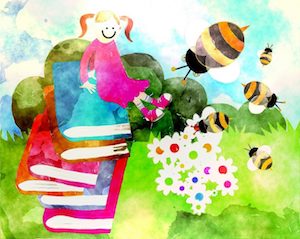
Re-entry has begun and we are now preparing to return to parts of our lives, like work and schooling, without knowing exactly what this looks like. How do we lead our children? What do they need from us? Can they adapt to the new realities of social distancing at schools and will this create anxiety and emotional problems for them? These are just a few of the questions I have been asked by parents but centre around the question of – how do I lead my child(ren) back to school?
Will our kids feel safe?
Safety is an illusion and telling our children that they won’t get Covid, or that we won’t get Covid is not the best way to make them feel safe. Safety has much less to do with their surroundings and more to do with their connection to adults. Assuring our children that they will be ‘okay’ is far less effective when it comes to feeling secure than making sure they feel taken care of by us. In order to understand why this is so we will need to understand something about attachment and why it matters to kids.
Children are not able to take care of themselves and they can’t make sense of the world like an adult does. It is their dependency on adults that makes them feel secure as they look to them for protection, guidance, and direction. The relationship with an adult is like an emotional bubble that preserves the child’s heart. When a child is afraid, frustrated, or overwhelmed, it is this relational bubble that can provide a safe place to retreat to. Home is where the heart is, and we need our children to give their hearts to us for safe keeping.
A child doesn’t feel lost when they can count on their adults to show up for them and to lead. It doesn’t mean that all the threats in their life disappear and that they can’t be hurt, but that they are shielded from this reality as they trust their adults to lead and to provide for them. Where they are confused, they should look to their adults to lead the way and for their adults to be responsible for figuring out issues of safety.
How can parents and teachers lead?
- We can work on taking care of our kids by being their compass point, caring for them in unexpected ways, providing more than they seek, listening with our full attention, and taking the lead in feeding them.
- We can take the lead in matchmaking our kids to their teachers and strengthening that connection. We can remind our children that their teachers have missed them and can be trusted to lean on.
- We don’t know all of the details about what school will look like as they re-enter, but we can direct them to their teacher who will tell them what they need to know.
- We can’t say ‘everything will be okay’ as we can’t know the future but we can say that we will take care of them and they can count on that.
If there was ever a time that we needed our children to rest in our care, it is now. We need to work to strengthen and preserve our relationship with them, providing more contact and closeness than they ask for and being generous in our capacity to make room for their big emotions like frustration, resistance, and fear. We need to take the lead and make decisions about schooling and whether to send them back to school.
Sometimes the hardest thing to do as a parent is to lead when we are full of doubts. Leadership can feel lonely and we may feel guilty as well. These are the emotions that come with parenting and we can care for our kids and lead them through these challenging times, despite all that we are feeling.
How will our kids adjust to the new restrictions and rules around social distancing?
The question of how classrooms will look and whether our children will adjust to them is understandably a big concern for parents. Schools and teachers have been working hard trying to figure these things out and should have started communicating the changes that have been put into place to parents. We can help orient our children to the changes by following the lead of the school and sharing the information they provide, for example, what supplies they can bring to school, guidelines for eating lunch, washing hands, and playing.
When we communicate information to a child that might alarm them it is best to do this in a matter of fact and non-alarming tone and manner. For example, this is how flight attendants give safety demonstrations on planes and it is how we lead our children through fire drills, lock down drills, and earthquake preparedness. Simple scripts and directions help to reduce fear and give the child a sense of agency.
One of the ways schools will be helping children adjust to the new rules around social distancing is by taking a playful approach. For example, we can sing songs to know how long to wash our hands to using hula hoops to understand social distancing. These playful approaches are strategic in helping kids adapt to new rules, experience less fear, and be less resistant to changes. Some parents might be concerned that schools aren’t taking matters more ‘seriously’ but we need to remember that play promotes feelings of safety and rest. It will take the attention off the risks and put the focus on the rules which will help our kids adjust to the new safety measures at school.
How can parents and teachers lead?
- Support play as a way to learn about social distancing and the new rules and restrictions.
- Show support for the school and teachers by positively addressing the changes they have made.
- If you have concerns about the changes at the school then direct these to the appropriate adults without your child’s involvement or awareness. It is key that your child trusts their teacher even if you are working through your concerns with the school.
- Matchmake your child to their teacher and the school by affirming that their teacher will take care of them.
Will this impact their emotional well-being and create anxiety?
Some parents are concerned that sending their child to school will create anxiety and stress. To answer this question, we will first need to consider where anxiety and stress comes from. Stress arises when you are emotionally overloaded and can’t make sense of everything in your life, and anxiety is a sure sign of this. It is important to remember that it isn’t school that is stressful per se (although there will be stressors there for sure), but that it creates separation from home and their trusted adults. Separation anxiety is from alarm at being disconnected from their caregivers and leads the child to question- “Who will take care of me now?”
If a child trusts their teacher and the adults at school to care for them then the separation from home won’t be as alarming and they will feel ‘safer’ in the care of their teachers and school. Kids feel highly alarmed when they anticipate the world is going to hurt them and there are no adults to support or take care of them. The answer is to foster a strong relationship with their teacher and make a seamless attachment team between the home and school. Parents can bridge the distance by giving the child something to hold onto that represents their relationship – a reminder of what they will do after school, an invisible string that connects them, to a picture of their family in their lunch box.
Our children can also be experiencing a range of emotions as a result of all the changes in their life. There may be frustration that they can’t be with their friends, play where they want to, and have a limited space to move in. They may be resistant to go back to school because they have enjoyed the extra time to play and the freedom from doing work while at home. Some kids are excited to go back to school and see people whereas some of our children are worried they will get sick with Covid. What is the answer to all of our children’s emotions?
Emotional health and well-being requires emotional expression and for kids it helps to have someone who will listen to you. We can help our kids talk to us by acknowledging the frustration or sadness they are experiencing. Sometimes parents are worried that if they allow their children to feel sad or worried then it will never stop and their child will just ‘learn’ to be this way. This is not accurate and the more we tell someone NOT to feel, the more feelings it will create. Emotions are not right or wrong, good or bad. Emotions are here to serve us and have an intelligence all on their own. The challenge is being patient with our kid’s feelings and giving them enough room to express them.
Many parents ask how they can get their child to talk to them and the answer lies again in your connection. Find some time to spend with them one on one and just enjoy being with them. As you play together, share a hobby, or go outside together, listen with your undivided attention. Be neutral as they share their ideas and feelings with you, acknowledging how they feel – rather than how you feel about how they are feeling. When children feel the conversation has become about meeting the parents needs, they can stop talking.
If words are hard to find then play is a wonderful place to soften feelings. The very nature of play – not being real or requiring you to work at a problem, allows for feelings to be expressed without words nor consciousness. If a child is frustrated then play that changes things such as building things, destroying, putting together, taking apart, mock aggression, wrestling, arts and crafts may be helpful. If a child is alarmed you may want to play more hide and seek, building forts and hideaways, monster games, chase and so on. If your child has few words, then lead them to their expressive play.
We will likely have to make some room for frustration and some tears too. There are so many futilities that come with the changes at school – from social distancing, to missing home, that our children may be emotionally charged and on need of release. Part of the “emotional homework’ we do with our kids is to help them express what didn’t work and lead them through frustration and to disappointment and sadness. Sometimes there are many things we cannot change but we can adapt and adjust if we make room for emotion.
How can parents and teachers lead?
- Bridge the home to school divide by giving your child something to hold onto that represents your relationship (i.e., what you will do after school, a picture in their lunch box.
- Listen to your child with your undivided attention and make time to just be together
- Don’t judge how your child is feeling, and don’t act defensively about what they are telling you, or try to talk them out of their emotions.
- If your child is resistant to go to school you might need to explore why, come alongside their lack of desire to return, and perhaps have some tears about it.
- Make room for play – especially after school which can help provide some emotional discharge.
- Tears can be helpful in releasing alarm and you can support your child this way by naming the things that are frustrating and acknowledge how sad it is.
- Hold onto your relationship with your child and use this as the safe vehicle to help them express what is stirring them up inside.
What about learning?
There is an order to what is most important when you are under stress. Relationship comes first, with play and tears next. Learning happens best when we feel safe in our relationship with adults or when we are at play. Helping our kids feel safe again at school, making sure they trust in their teacher to care for them, and getting our children to express themselves emotionally, are all things that must take precedence over learning.
Learning is easy when kids feel safe. Learning is hard when a child’s brain is preoccupied with questions of security and when it is emotionally overloaded. If we work to create the rest our kids need then the learning will come.
At this time the world may feel out of sorts and upside down for a child and our priority is to make them feel at home again with the adults who are there to care for them. Humans are resourceful, resilient, and amazing in their capacity to care for each other. With enough patience and focusing on what matters most of all, we can carry our children through this storm, taking comfort they are shielded from the worst because we are taking the lead.
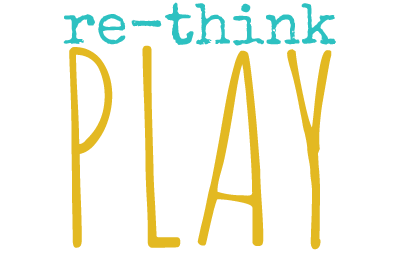
The world can be an alarming place. Difficult things happen that are out of our control. And yet, it is not about the trauma itself–what happens or doesn’t happen to us or around us– but what happens inside of us as a result. And about who is, or isn’t, present with us in our pain.
This is the message of the recently released documentary, The Wisdom of Trauma. In this movie, Dr. Gabor Maté (co-author of Hold On To Your Kids) speaks with depth and clarity, provocatively suggesting (as the title implies) that there is inherent wisdom in trauma.
Our body’s wisdom can take care of us by disconnecting from that which is too painful to bear. However, we are not meant to stay in this disconnected state. As Gabor Maté says in the introduction to the film, “We have to work our way back to feeling, when we are ready.” I’m going to piggyback on that and suggest an additional route we may not have considered: we can play our way back to full feeling as well.
But first we should explore the question: why would we want to feel in the first place if it hurts too much? This is a good question; one that I often asked myself in the many years that I avoided sadness at all costs. Simply put, the reason we need to feel is that not feeling leads to all kinds of physical manifestations and emotional complications. Gabor Maté taught me that many years ago when I read his book, When the Body Says No (2003). It seems so obvious to me now, but I remember at the time it felt like a revolutionary thought: our bodies take on whatever emotions we can’t allow ourselves to feel. Our disconnect translates into illness, addiction, anxiety, and more.
We need to see each other, our humanity, but it’s hard to see when we’re disconnected. Feeling and seeing go hand-in-hand, because feeling is the feedback, the signal of what’s happening inside. But we don’t get those signals if our brain decides it’s not safe. Our innate defence system sends messages of its own that start inhibiting any feelings that would be too much to bear. We no longer “see” what’s happening inside. This can help us function in difficult circumstances and is often necessary due to the unbearable nature of the pain. But it is meant to be a short-term measure.
Several years back, Gabor shared with me some research he was doing on babies born during the time of 9/11. Myself, I had gone into labour early on the morning of September 11, 2001. When I saw the news of the terrorist attacks, my alarm kicked into full gear, and I decided I couldn’t give birth to a child that day. How could I when the world seemed turned upside down? What kind of a world would I be bringing my child into? I walked the streets in a daze. I was numb and disconnected. I didn’t feel anything. Three days later my daughter came into the world, hyperventilating at any hint of separation and with heightened sensory challenges. I believe my alarm at the time shaped her early experiences. So did Gabor.
You may be wondering at this point what play has to do with all of this? How can we even talk about trauma and play together? The seeming frivolity of play has no place in the seriousness of trauma. Stay with me here …
When we have been operating out of a place of disconnect for too long — deeply alarmed and frustrated with all that isn’t working in our lives, but too defended to sense it — it’s harder to find our way back to feeling. We need some help.
Enter play.
Play gives us a way through. It slips past our defences and says: We can do this. I am with you. You are not alone. Play can make it possible to touch on those feelings that seem impossible to bear in “the real world.”.
Play needs the freedom to go wherever it needs to go. It is not about the outcome, or the product, but the process we engage in. It is not about meeting someone’s expectations, even our own … the art may not always be pretty, the musical notes may not always be on key, but that’s okay. More than okay, actually. That is the point.
In the play mode there is room for all of YOU – messy emotions and all. Like being wrapped in the arms of someone who loves us or nestled in the warm fur of our favourite pet, play, too, provides a safe womb that allows us to touch the places – the fears, the frustrations, the futilities – that feel unbearable to touch directly.
What does this kind of play look like? That depends.
For me, it has looked like making time for my mind and body to wander in nature; going to imaginary places in my mind; playing with words and images; reading stories; spinning alpaca fibre and playing with coloured wool; playing music – haunting cello melodies, melancholy Blue Rodeo, edgy rap or angsty Twenty One Pilots (depending on my inner state); creating fairy villages (complete with miniature snails); cutting up magazines and putting images and words back together in a way that represents what is happening inside. The thing with play is: we don’t have to know what’s inside when we start; that’s the point. Through play we magically connect with what is already there in us. We give it expression, a way to come out.
For you, or for your child, this may look different:
• Perhaps the frustration comes out through a playful pillow fight, sword fight, or nerf gun battle. When it comes out through play like this, the relationship is preserved in that all of the difficult feelings that may come out in the play don’t threaten to hurt the connection between parent and child.
• Perhaps when we feel the emotional energy starting to build (and potentially spill out in inappropriate ways), we can turn it into a spontaneous dance party. The movement can provide a channel for what needs to come out, which can actually bring us closer to the more vulnerable feelings underneath.
• Perhaps it is through reading a book or watching a movie that allows space for the tears to come – through laughter or sadness. Witnessing someone else’s story allows an opportunity to gently touch on our own in ways that may seem surprising to us.
The thing is, we never really know what will become a portal for us until we find ourselves being moved in it. One of my favourite quotes is from Richard Wagamese (Keeper ’n Me, 1994): “ … something in the music sorta bumped up against something in my soul and made it move”. A mystery, yes … but a beautiful and transforming one.
Through the music, the movement, the story, we are carried and we are held. Our pain is given a voice. We tap into the healing system that lives in all of us. Through the wisdom of play, those stuck places of disconnection start to find movement, and connections start to be made.
“Underneath that traumatized person there’s a healthy individual who has never found expression in his life.” (The Wisdom of Trauma)
As Gabor’s wife, Rae Maté, said so poignantly in one of the interviews during the film release: “There’s no way out but through.” She talked about art in her own healing journey and how it wasn’t about knowing what she felt and then creating art out of it, it was about being present with whatever was there and letting it come out on to the canvas. Rae described how once it came to the surface, she could look back at it and see into herself, like a mirror reflecting her inner world. That’s the wisdom of play.
Play has been deeply misunderstood and undervalued. We have not taken care of the gift that nature has given us in play. And many of us are afraid of it. I know I was for many years, ever since I became conscious that there was a “right” way to do things. There was no room for exploration or mistakes, only the right answer mattered. I had lost my play, and my self, somewhere along the way. The good news is, play found me again. A little later than I would have liked, but it found me nonetheless. I started to find my way back to myself. I started to feel again.
We need to rethink play*. Because play — the kind that facilitates a connection with our inner world and allows for expression and movement — has the potential to actually heal our wounds and bring us back to our humanity. We need it. We’ve always needed it. And we need it now more than ever.
My wish for you, dear reader, is for you to somehow find a way to carve out space for pockets of play in your child’s life … and in your own. Remember that play is not just a luxury to be indulged in when times are good; it is actually a way back to yourself when times are hard. In the midst of difficult circumstances, we need play the most. It may look small and innocent, but don’t underestimate play’s potential to save us all.
*Editor’s Note:
July 2021 – Keep your eyes out for Tamara Strijack and Hannah Beach’s Rethink Play Project coming soon.
Go to our Free Resources page to watch Tamara and Hannah’s webinar, Creating Playgrounds for Emotional Expression (2020).
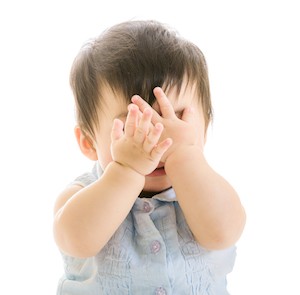
Tummy aches and monsters in the closet. Headaches and risky behaviour. Frequent hand-washing and repetitive behaviours. These are all manifestations of alarm. Thinking about this list of manifestation probably doesn’t make any of us feel very playful, however play is often just what is needed to keep our children’s alarm system healthy and well-functioning.
The alarm system lives deep in all of our brains, beautifully designed by Nature to look after us by keeping us close to those who take care of us. Because attachment instincts are, truly, survival instincts, what alarms us most is separation from the people and things we are attached to.
Different kids deal with alarm in different ways. In some, the alarm system is hair-trigger, the equivalent of the fire alarm that goes off in response to a few particles of dust. For others, separation, the true source of alarm, is too painful to see, so the brain assigns other reasons to the alarm (this is often the genesis of “irrational” phobias). For others yet, alarm is too vulnerable to feel at all. These kids experience the physical manifestations of alarm, such as restlessness and agitation without consciously feeling alarmed at all. When defenses go very deep, we are left with kids who are not worried, restless or agitated, in fact, they often look cool as ice. These are the kids and teens for whom “No fear” is the mantra; the rush of adrenaline becomes an experience of relief for them and they seek it out through dangerous and risky behavior and, sometimes, cutting or burning themselves.
We can see that a well-functioning alarm system gives kids “danger alerts” that they are able to feel and respond to. What can we do to support the alarm systems of our anxious, obsessive, restless or risk-taking kids so that they can work in the way Nature intended?
As we are finding is so often the case for all sorts of disequilibrium or emotional stuckness, play can be the way through. Three types of play can support a healthy well-calibrated alarm system. The first might be thought of as “alarm system calibrating play,” providing a healthy dose of alarm in a playful context. This type of play has been part of our cultural wisdom since time immemorial, as evidenced in so many of the intuitive ways we play with babies and children: peek-a-boo, hide-and-seek, and reading fairy tales and nursery rhymes with a little bit of darkness in them.
My sons loved playing “Mama’s Hungry!!” When I would sense that the alarm in them was rising and getting a bit stuck, I would casually announce in a loud voice, “Boy, am I getting HUNGRRRRYYY!!!” They would shriek with playful fear and delight as they started running around the house while I chased them, trying desperately to evade my “hungry jaws” (my arms)! This type of play helps the alarm system reset and find its equilibrium in a safe context. For older kids and teens, slightly scary play may include campfire stories, haunted houses and even scary movies.
The second type of play that can support a healthy alarm system involves playing with the theme of courage. Courage is a wonderful “solution” to alarm. If conditions are conducive, our kids are able to feel both their desire and their alarm at the same time, and therefore take brave risks to reach a desired outcome. For example, if they are afraid of getting up on stage but want to be in the school play, they may be able to find the courage to “slay the dragon” of their stagefright in order to “capture the treasure” of being in the play.
There are many types of play that can plant seeds of courage, from ropes courses and playing pirates to reading stories about acts of courage and pretending to be explorers overcoming great difficulties.
Finally, the third type of play involves evoking a bit of sadness to help “drain” alarm (similar to what we talked about in the What to do with Frustration editorial); there are so many separations our children are faced with where the only thing there is to do is to feel the futility of changing the circumstance.
Anything that has a bit of a melancholy flavour can lead to a bit of sadness, which can help alarm transform into futility and release from our childrens’ systems. Songs, stories, movies and even telling stories about beloved pets or family members who have passed away are all indirect ways to support the sadness that is so often needed to keep the alarm system well-calibrated and healthy.
These three modes of play—alarming play, courage play and sadness play– can support our kids in developing healthy and well-working alarm systems. Play so often seems frivolous and “up to nothing”, but it can have profound effects in transforming a dysfunctional alarm system into one that is working to keep us safe and cared for, just as Nature intended. Once again, play can come to our rescue!





